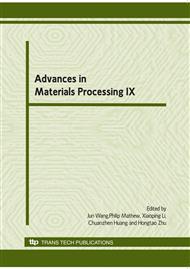p.3
p.9
p.15
p.21
p.27
p.39
p.45
A Knowledge Based Hybrid Model for Improving Manufacturing System in Rolling Mills
Abstract:
Hot steel rolling is amongst the most important industrial techniques because of huge amount of consumed resources, immense environmental impact, and the significance and enormous quantity of long products. Criteria for improving rolling operations include process efficiency, resource consumption, system reliability, product quality and ergo-ecological sustainability. There is an increasing availability of information within and beyond the domain of forming by rolling. With advances in computerised information processing, it becomes apparent that further progress is to be sought in intelligently combining the strategies and theories developed in differing disciplines. The key to optimising rolling systems is to be found in hybrid models. This approach calls for utilising cross-disciplinary knowledge, including a selection amongst methods such as stochastic, fuzzy and genetic modelling, process control and optimisation as well as supply chain and maintenance management. Evidence obtained by experiments using small-scale chemo-physical modelling encourages the use laboratory rolling for preliminary validations. Research strategy is conceptualised on the basis of a knowledge-based hybrid model. The sample space for this model is constituted by the rolling passes translated into the form of vectors. An example of a rolling pass translation into the vector form is presented.
Info:
Periodical:
Pages:
3-8
Citation:
Online since:
June 2010
Authors:
Keywords:
Price:
Сopyright:
© 2010 Trans Tech Publications Ltd. All Rights Reserved
Share:
Citation:


